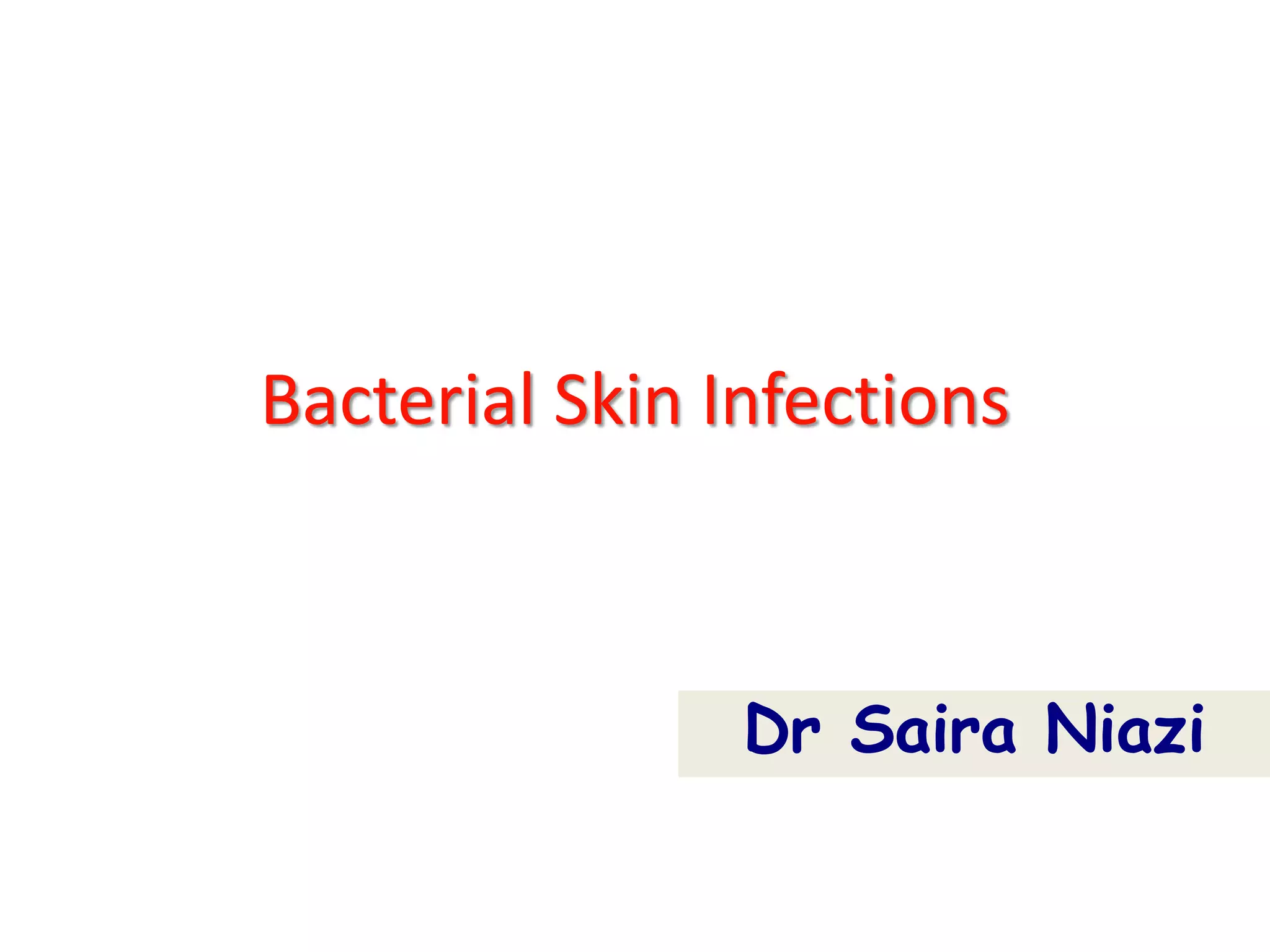Bacterial skin infections like impetigo, folliculitis, furuncles, and carbuncles are commonly caused by Staphylococcus aureus and Streptococcus pyogenes bacteria. Impetigo typically presents as non-bullous or bullous lesions that rupture, forming crusts. Folliculitis is a superficial infection of hair follicles. Furuncles (boils) are deeper hair follicle infections that become pustular and necrotic. Carbuncles involve groups of contiguous follicles and surrounding tissues. Treatment involves antibiotics, good hygiene, and addressing predisposing skin or medical conditions.























































































